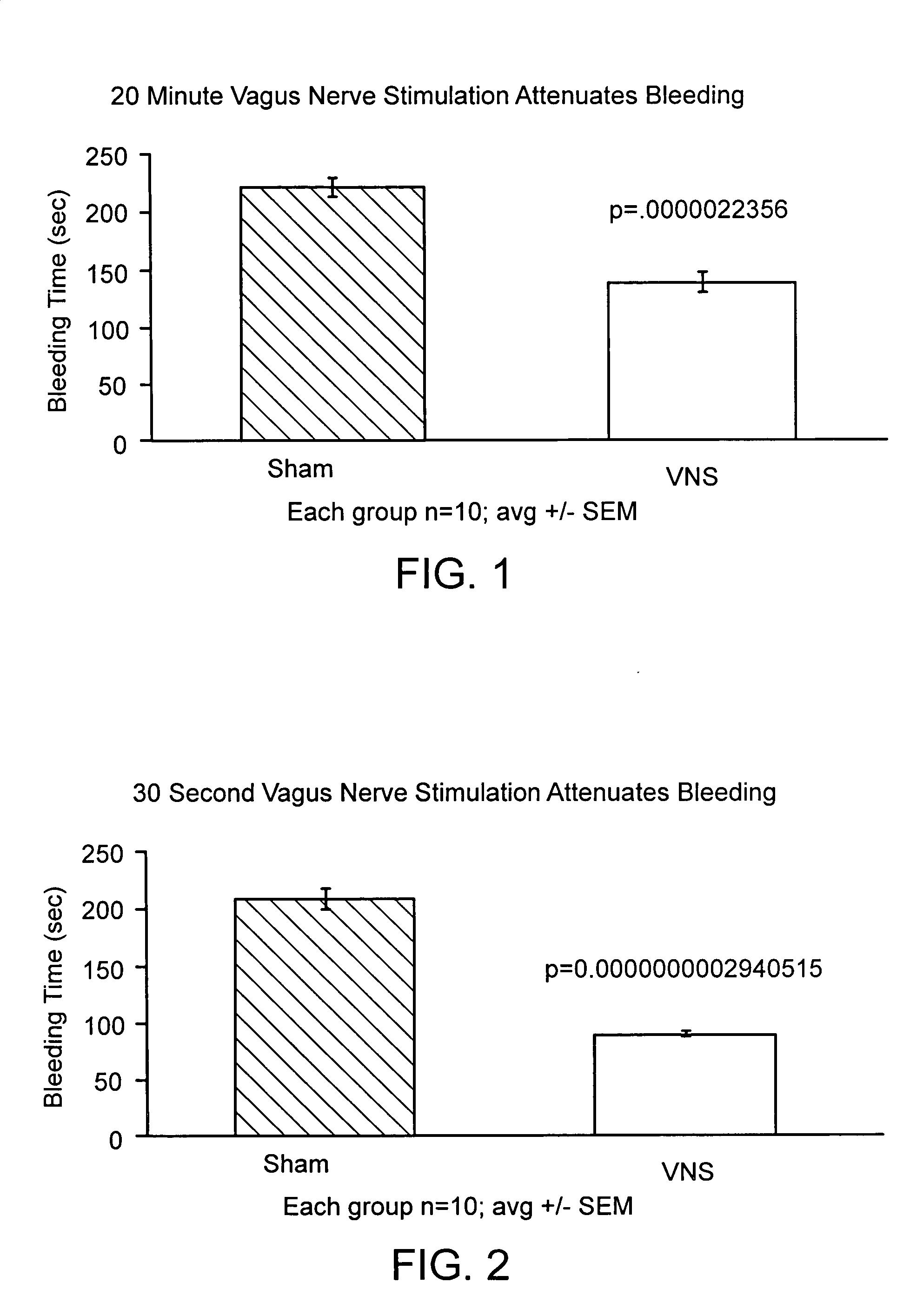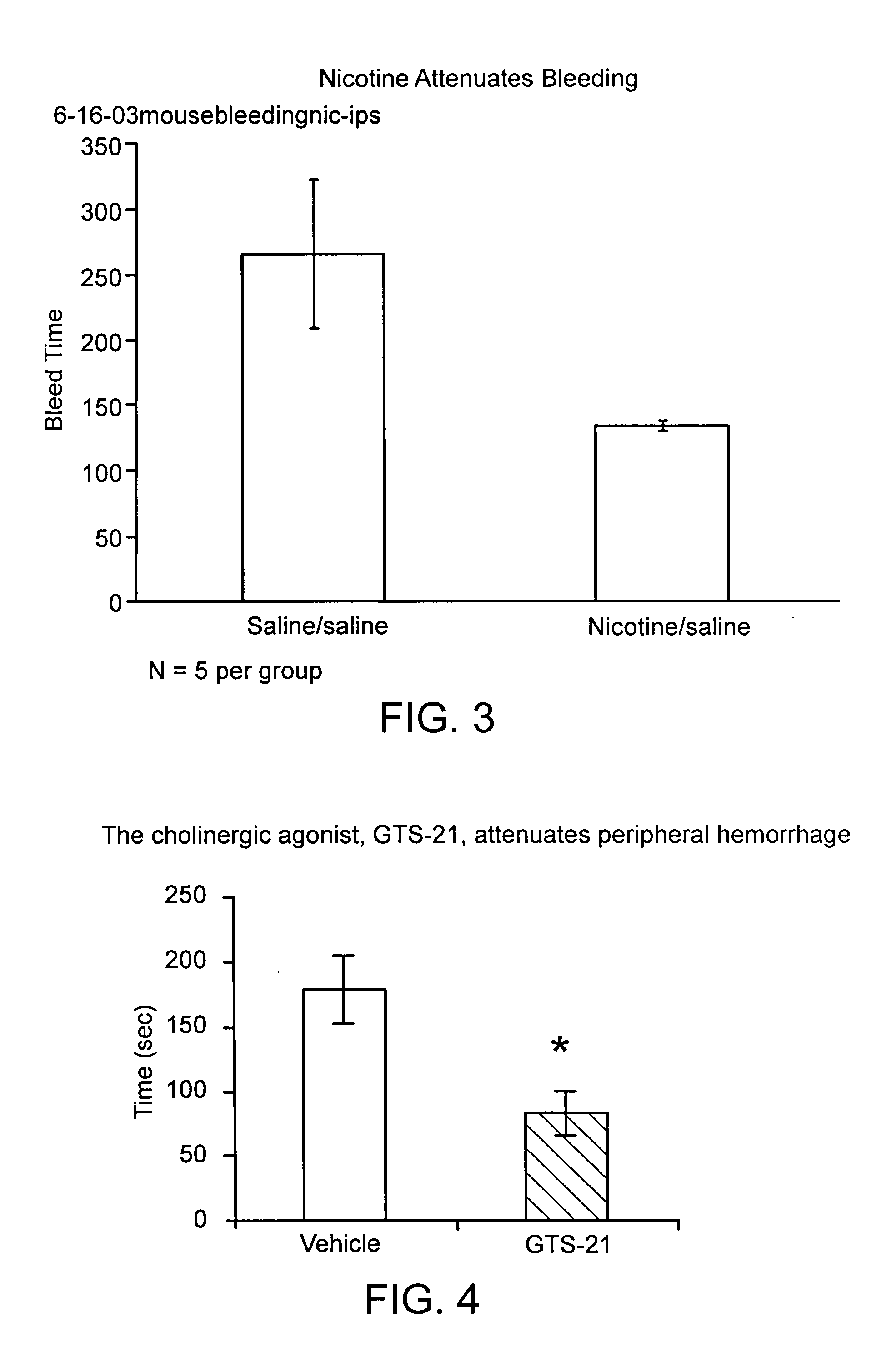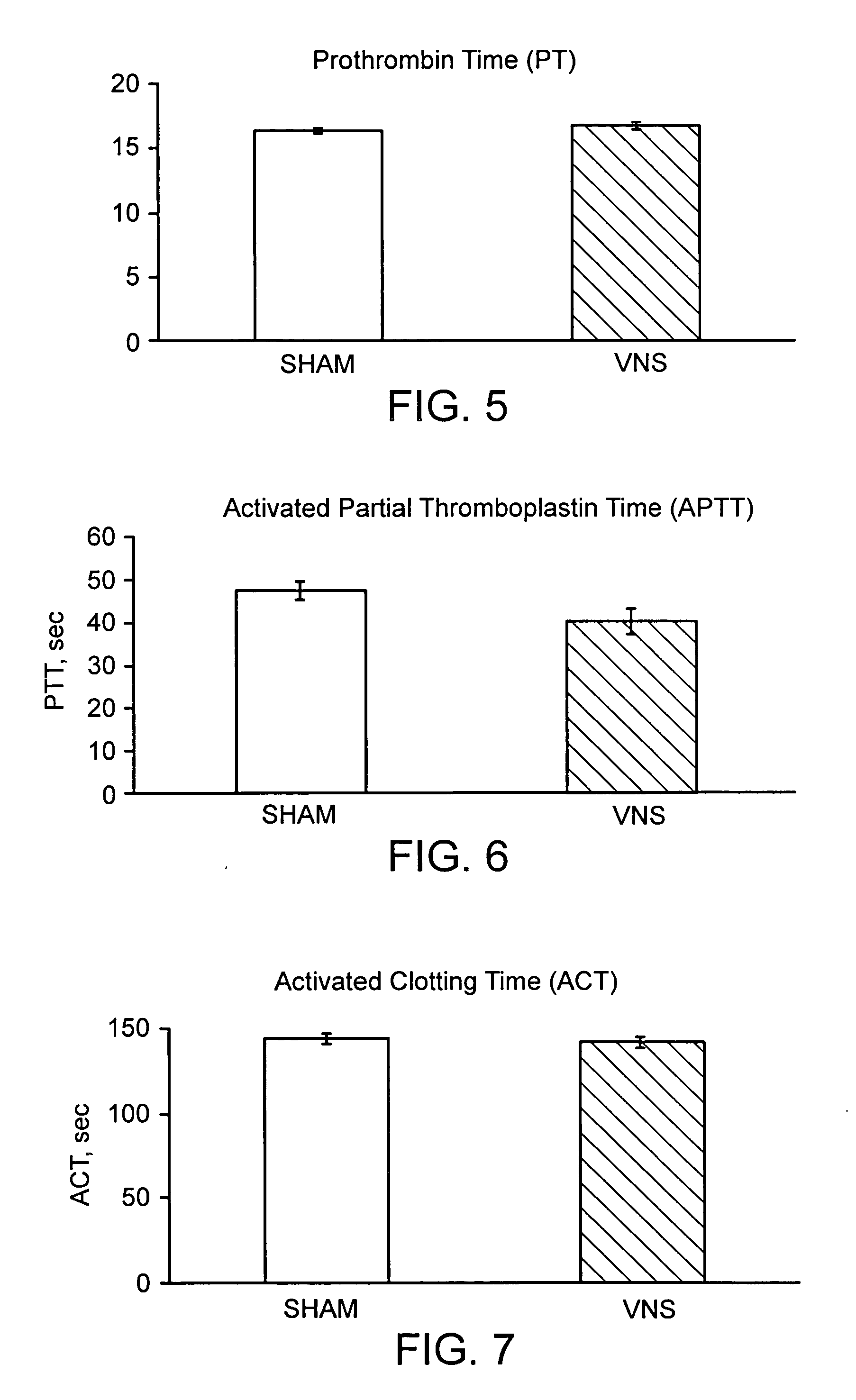Neural tourniquet
a technology of neural canals and tubes, applied in the field of neural canals, can solve the problems of eye damage, eye damage, eye damage, etc., and achieve the effects of reducing bleed time, reducing bleed time, and reducing bleed tim
- Summary
- Abstract
- Description
- Claims
- Application Information
AI Technical Summary
Problems solved by technology
Method used
Image
Examples
example 1
Reduction of Bleed Time in Mouse Model (Male BALB / c Mice) with Electrical Stimulation of the Vagus Nerve
[0099] The mice were divided into two groups. In both groups the mice necks were dissected down to the musculature and the left vagus nerves were isolated. In the first group a 1 volt electric current was passed through the vagus nerve for 20 minutes. In the second group, the control group, the vagus nerve was isolated only, and the group was untreated for 20 minutes.
[0100] The mice tails from both groups were warmed in 37° C. saline for five minutes. The tails were then cut 2 mm from the tip, and the tail blood was collected in a 37° C. saline solution.
[0101] The results of the experiment are presented in FIG. 1. Electrical stimulation of the vagus nerve significantly reduced bleed time in the mice compared with the control group, thus demonstrating that stimulation of the vagus nerve decreases peripheral bleed time in a subject.
example 2
Reduction in Bleed Time in Mouse Model (Male BALB / c Mice) with Electrical Stimulation of the Vagus Nerve
[0102] The mice were divided into two groups. In both groups the mice necks were dissected down to the musculature. The mice tails from both groups were warmed in 37° C. saline for five minutes.
[0103] In both groups the left vagus nerves were isolated. In the first group a 1 volt electric current was passed through the vagus nerve for 30 seconds. The second group, the control group, was untreated for 30 seconds.
[0104] The tails were then cut 2 mm from the tip, and the tail blood was collected in a 37° C. saline solution.
[0105] The results of this experiment are presented in FIG. 2. Two parameters in this example were changed from Example 1, firstly the duration of stimulation was decreased from 20 minutes to 30 seconds and secondly the mice tails were prewarmed prior to vagus nerve stimulation. The purpose of prewarming the mice tails prior to vagus nerve stimulation was to mi...
example 3
Reduction of Bleed Time in Mouse Model (Male Balb / c Mice) with Administration of Nicotine
[0106] The mice were weighed, and ketamine (100 mg / kg) and xylazine (10 mg / kg) was administered to each mouse.
[0107] The mice were then divided into two groups. After 20 minutes group one was injected with nicotine (0.3 mg / kg) and the second group, the control group was injected with saline. The nicotine solution was taken from a 162 mg / ml stock solution and diluted 1:10 in ethanol and then further diluted 1:250 in phosphate buffer saline (PBS), bringing the final solution to 0.0648 μg / μl; 151 μl / 25 g mouse was injected into the mice.
[0108] After five minutes the two groups were injected with a saline solution.
[0109] After 20 minutes the mice tails from the two groups of mice were warmed by stirring in 37° C. water. The tails were then cut 2 mm from the tip with a fresh scalpel. The tails were immediately immersed in a fluorescent activated sorting (FACS) tube which contained 3 ml pre-warmed...
PUM
| Property | Measurement | Unit |
|---|---|---|
| bleed time | aaaaa | aaaaa |
| prothrombin time | aaaaa | aaaaa |
| prothrombin time | aaaaa | aaaaa |
Abstract
Description
Claims
Application Information
 Login to View More
Login to View More - R&D
- Intellectual Property
- Life Sciences
- Materials
- Tech Scout
- Unparalleled Data Quality
- Higher Quality Content
- 60% Fewer Hallucinations
Browse by: Latest US Patents, China's latest patents, Technical Efficacy Thesaurus, Application Domain, Technology Topic, Popular Technical Reports.
© 2025 PatSnap. All rights reserved.Legal|Privacy policy|Modern Slavery Act Transparency Statement|Sitemap|About US| Contact US: help@patsnap.com



